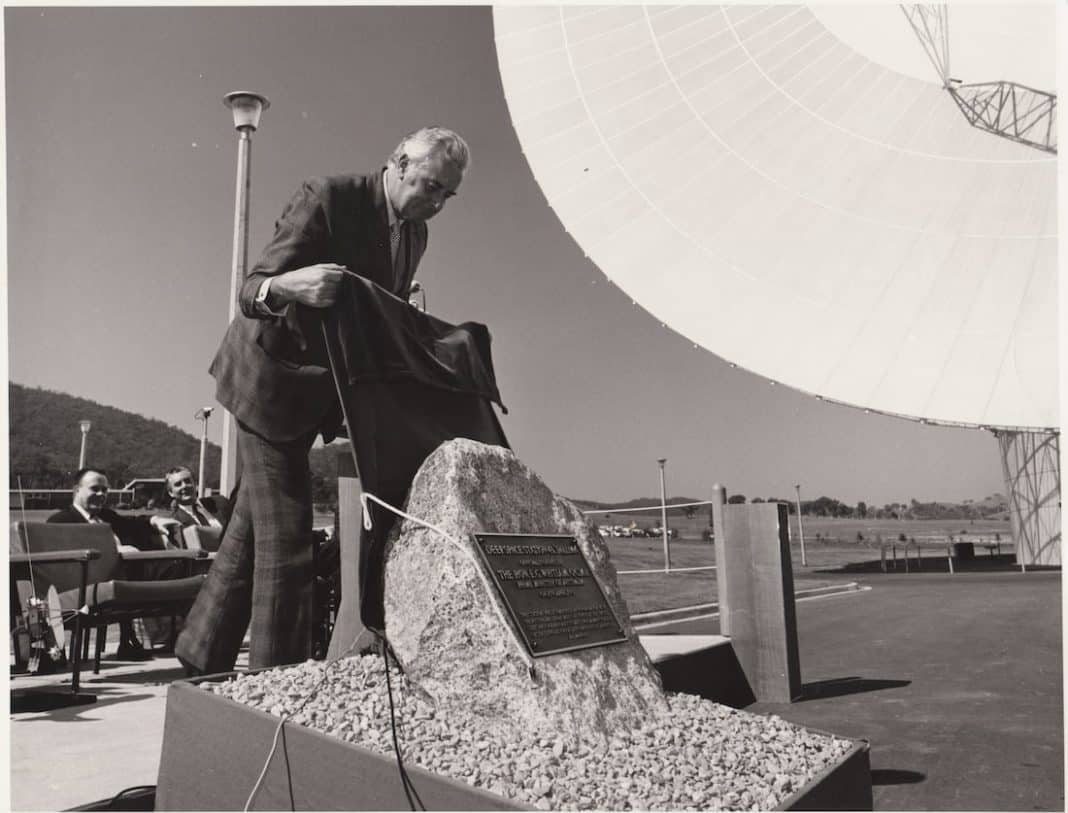A deep space station tucked into a quiet valley near Canberra is celebrating 50 years of exploration of the solar system and beyond.
The largest antenna dish in the southern hemisphere, opened by Gough Whitlam on April 13, 1973, has provided a vital link between earth and deep space robotic missions.
Part of NASA’s global network that supports interplanetary spacecraft, Canberra’s big dish is officially known as Deep Space Station 43.
Located at Tidbinbilla, the complex managed by CSIRO scientists is one of three space network stations around the world. The others are near Madrid in Spain and at Goldstone, California.
The various antennas at the Canberra Deep Space Communication Complex receive hundreds of gigabytes of data each day, including thousands of images, from dozens of spacecraft.
The complex has supported hundreds of missions, including multiple landings by spacecraft on Mars, encounters with asteroids and comets, orbital missions around Jupiter and Saturn, and a journey to Pluto.
For more than 45 years, the biggest dish has supported the “grand tour” of the solar system by NASA’s twin Voyager spacecraft.
The two robotic probes launched in 1977 completed flyby explorations of Jupiter (1979), Saturn (1980), Uranus (1986) and Neptune (1989).
Both have continued to travel ever deeper and are now in interstellar space, the space between the stars.
Voyager 1 and 2 are so far away (24 and 20 billion kilometres, respectively) that Deep Space Station 43 is the only antenna in the world capable of communicating with both spacecraft.
To support the Voyagers, the dish surface was increased in size in the 1980s from 64 metres to 70 metres in diameter. It remains the largest steerable parabolic antenna in the southern hemisphere.
After surviving bushfires, and despite a pandemic, a team of nearly 200 engineers and technicians upgraded the dish in 2020 to support upcoming robotic and human missions to the moon and Mars.
New transmitters and receivers, energy efficient power and cooling systems, and an overhaul of its extensive cabling systems have extended the dish’s life and role.
A smaller but arguably more famous 26-metre antenna, which returned the first images of the Apollo 11 moon walk in 1969, was moved to Tidbinbilla in 1981 from Honeysuckle Creek and retired from deep space duty in 2010.



